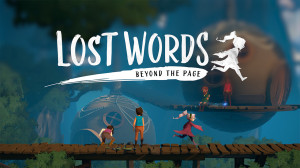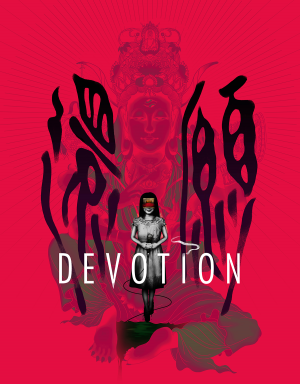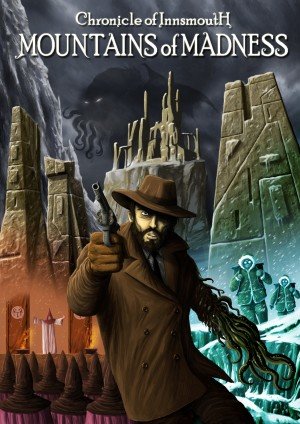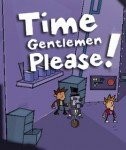Review for Papetura
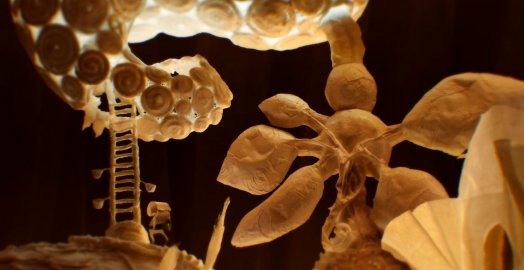
Oscar Wilde famously described art as being “quite useless,” by which he meant not that it’s pointless or without value but that it exists for no practical reason, save that the world is a little nicer for having it there. Great art makes us stop and reflect on how lucky we are to experience it—after all, whoever chose to make it didn’t have to. I thought about that a lot while wandering through Papetura’s papercrafted corridors. It wasn’t necessary for developer Tomasz Ostafin to spend six years designing, engineering, and hand constructing each and every visual element out of paper. Nothing about this story of two unlikely heroes in a world on fire demanded such an exacting and painstaking approach. Ostafin would have been forgiven, especially after an unsuccessful crowdfunding campaign, for setting his sights lower and using more traditional methods to animate his game, or even abandoning it entirely—but ease and practicality weren’t the point. Rather, the point was to create something gorgeous, unique, and full to bursting with life in a way that no other title could be, and by that metric Papetura is a resounding success.
You play as Pape, a grumpy fellow who looks something like an unfurled scroll with arms and legs. Pape lives in his own little corner of an underground realm made entirely from paper, and he’d like nothing more than to be left alone there. Unfortunately for him, his privacy is suddenly invaded by a being of living darkness, which seals him in his room in an apparent attempt to prevent anyone from interfering with its plans to set the world ablaze. Escaping into the havoc caused by the dark being’s attempt to harness the sun, Pape stumbles upon Tura, a small worm-like child who seems to have been abandoned in the chaos. Much as he might like to keep running and save himself, Pape is moved by Tura’s plight, and he reluctantly steps in to act as the child’s guardian. Scooping Tura up in his arms, Pape sets off into the great unknown to look for a way to reverse the damage.
It’s no stretch to say that Papetura’s success or failure hinged from the outset on how fully it could imbue its paper world with the spark of life. Thankfully it pulls the feat off beautifully. You’d arguably have to go back all the way to The Neverhood to find another point-and-click title that so embraces the material it’s made from with such unfettered playfulness and curiosity. This isn’t simply a game made out of paper, but an exploration and celebration of the qualities that make papercraft a unique creative medium. Papetura leans into its paperiness with wrinkles and fold-marks lending texture to everything, and light from the expertly placed LED bulbs shining through surfaces to make full use of their translucency. There’s a weight and physicality to the landscapes and characters even as their creased, crumpled and caved-in forms proudly defy the conventions of real-world biology and geography.
The environments resemble vast caverns, full of rocky outgrowths, yawning crevasses, and underground lakes. The color palette serves to create an atmosphere of subterranean intimacy, with dusky oranges that evoke flickering lantern light and cool blue-whites like the glow from a phosphorescent cave-being. The flora and fauna scattered throughout are wonderfully alien, like a ceiling-dwelling creature who serves as a living water main and a toothy, insectivorous beastie resembling a suitcase with legs, and for the most part they move with fluid, lifelike grace. Those few that don’t, like the patrons of a small cafe in the belly of a monster, nonetheless exude a jerky stop-motion charm.
It’s not just the critters that thrum with life, though; every inch of the world feels simultaneously organic and like a very human artistic achievement. The soundtrack contributes heavily to this, as each screen is accompanied by a whole menagerie’s worth of ambient noise, giving the impression that you’re wandering through a dense and thriving ecosystem. The dialogue is all non-verbal, with characters communicating via pictographic speech bubbles, but everyone you meet has a distinct personality that they express through squeaks, chirps, grumbles and squelches. The most expressive and endearing of these belong to the central characters, and especially little Tura, whose childlike coos and gurgles manage to convey an impressive and frequently hilarious array of emotions and reactions. Composer Floex’s synth-orchestral score lends an ethereal, otherworldly quality to the proceedings, once again equaling the quality of his previous work with Amanita Design.
The point-and-click interface is simple and straightforward, letting you control Pape with a context-sensitive cursor. This differentiates automatically between walkable areas, wherein it displays Pape’s little legs, and interactive hotspots or characters, which turn it into a pointing finger and a speech bubble, respectively; an arrow appears when you hover over the exit from your current screen. The controls remain identical, despite the pair’s wildly different anatomy, during a brief sequence in which you guide Tura instead.
At the start of the game, Pape carries a small cannon that lets him fire projectiles into the environment. He loses it shortly before picking up Tura, who spends most of the game cradled in Pape’s arms, but the little creature can serve an identical purpose by spitting seed-like lumps at your chosen targets. Both the cannon and Tura’s regurgitations are activated by clicking a thought bubble that appears whenever Pape stands still, allowing you to choose the trajectory of your shot (whose arc is helpfully visualized on-screen) with the mouse before letting fly with a second click. This mechanic lets you interact with hotspots beyond normal reach; you’ll variously use it to shoot lights on and off, to wake up sleeping animals, and to move (or distract) environmental hazards.
Most of the puzzles involve manipulating your surroundings in some way, often with your projectile launcher. In one room, for instance, you’ll have to knock falling objects out of the air so that they land a certain way. There are also some well-designed logical challenges based on interpreting visual clues, as when a pattern visible in one room corresponds to the order in which you’ll have to arrange certain features in another. While Pape does have an inventory for storing certain items he picks up—in the form of Tura’s apparently cavernous gullet—it’s not the interactive sort; it’s just there to remind you what he’s acquired until you click the appropriate hotspot, which prompts him to use it on his own (after Tura, er, produces it). Oftentimes clicking a hotspot will inspire Pape to use his little friend directly on the environment, as Tura’s lithe, wormy body can assume numerous shapes automatically. At different points Tura gamely serves as a hook, a fishing pole, and (most memorably) an oar for propelling a raft; the little creature’s stoic, taking-one-for-the-team gasps for air in between paddle strokes are adorable and hilarious.
Only one puzzle felt off to me, in which you have to locate a character who’s depicted in a painting; to my eye the actual character bears only a passing resemblance to the image you’re shown, so it took using the game’s built-in hint system to realize I’d been looking straight past them. Thankfully the hint system itself is a joy: a bubble appears containing neon-bright line drawings depicting a spider hunting for colorful flies in amongst a field of floating bacteria, and you must use the mouse to guide the hungry arachnid to its meal while dodging the germs. Successfully gathering up all the morsels will reveal a short animation that nudges you toward the puzzle’s solution. It’s a small thing, but it makes giving up feel less like a defeat and more like an opportunity to play in a different way.
I only got stuck that once, but the tedious amount of backtracking that comes up in the game’s middle portion left me sorely tempted to ask for more hints. Pape walks at a leisurely pace, and there’s no way to travel across distances except to watch him shuffle every step of the way there. This makes exploring more of a chore than it should be when a puzzle solution isn’t immediately obvious, and it also drags out a segment that requires finding several ingredients in different locations before returning to the creature that needs them. The scenery is appealing enough on its own that spending extra time in it isn’t the worst thing in the world, but for a game that only takes two to three hours to complete, it’s a bit of a drag to have to spend more time than feels necessary treading the same paths back and forth.
Some players might be disappointed to realize that the game lasts for so brief a time, but it feels unavoidable given its construction. The six years’ worth of planning and preparation that went into Papetura is evident on every screen, and for there to be much more of it would have required an even greater commitment of time and effort. Thankfully the sheer amount of creative energy the game packs in from start to finish makes the experience feel bigger than it actually is, and it’s hard to feel anything but satisfied with what’s here.
I don’t expect to see another game like Papetura in the near future. For one thing, any imitators it might spawn will have their work cut out for them where production time is concerned; for another, it’s simply not the kind of game that’s easily duplicated. Ostafin cites The Neverhood and Machinarium among his inspirations, and those influences are certainly there if you look. And yet Papetura never feels like it’s simply aping its forebears, and it’s certainly not attempting a hollow “love letter” to what others have already done better. This is a game that’s wholly and uniquely itself, a joyful act of creation that invites players to simply delight in the possibilities of an imaginary world, and the result is that our own world is a little lovelier for its having been made.










